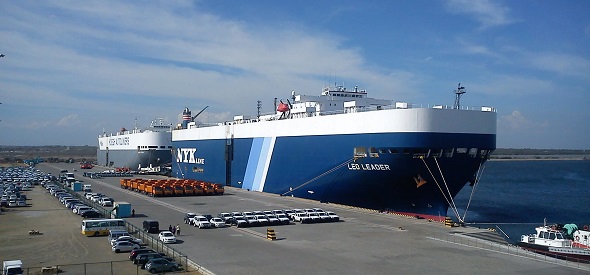Sri Lanka takes on more Chinese loans
March 27, 2019 | Expert Insights

Sri Lanka signs on to a US$989 million loan from a Chinese state-controlled bank, further entrenching China in the Indian Ocean island.
Background
Bilateral relations between Sri Lanka and China are friendly, as a result of historic and cultural ties that date back centuries. In recent years, the two countries have strengthened ties. China has provided economic, military and technical assistance to Sri Lanka. China began investing large amounts of money in Sri Lanka after the 2009 civil war. This is largely due to Sri Lanka’s geographical location. The country plays a key role in China’s ambitious vision as dictated by the One Belt One Road project (OBOR). Nearly every South Asian country has signed onto OBOR. OBOR aims to increase the connectivity and cooperation among Asian countries, Africa, China, and Europe. Sri Lanka is one of the few countries that has supported China over the disputed South China Sea territory.
Hambantota Port was built by a Chinese company and funded by Chinese loans. However, Sri Lanka was unable to repay these loans due to poor performance and debt. As of 2019, Sri Lanka’s total debt stood at $53 billion. As a result, Sri Lanka inked a $1.12 billion trade agreement with a state-run Chinese firm. The Sri Lanka Ports Authority sold a 70% stake in the Hambantota port to China Merchants Ports Holdings. The lease is for a period of 99 years. This is a part of China’s ‘String of Pearls’ strategy that seeks to build a network of friendly ports across Asia.
Analysis
Sri Lanka has signed on to a US$989 million loan with China’s Export-Import Bank with the aim of building a highway that connects the centre the island to a Chinese-built port on its southern shore. The planned highway runs from the proposed industrial and economic zone in Kandy to the port of Hambantota. Kandy is typically known for its tea, spices and tourism. Sri Lanka’s finance ministry said that the concessional loan is aimed at “strengthening financial cooperation in the field of infrastructure development.” The loan comes after four years of negotiations.
The latest set of loans comes at a time when Sri Lanka is struggling to pay its US$5.9 billion in foreign loans owed this year. At least 40% of the amount must be paid to ensure that the nation does not default. The loan, aimed at boosting infrastructure and economic trade, is to be applied towards 85% of the estimated price for the expressway, which will cost a total of US$ 1.6 billion.
China’s intentions in Sri Lanka are plain; China gets the opportunity to entrench itself in a key geo-strategic location. China obtains commercial space through its investment while hedging its bets against a potentially belligerent India. Sri Lanka’s consistent support for China’s ‘One China Policy’ in addition to its contentious OBOR plan, has led to ties between the two nations deepening significantly. China has sought investment in other Indian Ocean littorals, including Pakistan, although India has been hesitant to join in what it sees as an aggressive Chinese policy to encircle it. For China, securing its energy from its sources in the west is key; the Indian Ocean is essential to this plan. China’s goal of achieving its status as a ‘Comprehensive National Power’ demands a ‘peaceful periphery,’ a key component of its foreign policy, and entrenching itself in Sri Lanka aids this endeavour, both economically and militarily.
Sri Lanka’s dependence on Chinese loans is likely to garner further scrutiny amidst criticism that Chinese interests in the country are dragging the nation deep into debt. The criticism that China employs financial assistance in aid of securing its own ends stands to reason here, where a Chinese port is being connected with a key industrial zone. The domestic power is expected to take on more loans in order to meet the exponential demands of infrastructure and economic growth.
Assessment
Our assessment is that China is seeking to embed itself deep into Sri Lanka’s fiscal affairs in order to support its own foreign policy goals. We believe that China will continue to develop Sri Lanka to ensure the security of its energy resources. We also believe that it is not in the best interest of Sri Lankans that their government continues to dive deeper into Chinese wallets in order to stimulate economic growth; spreading one’s risk by taking loans from multiple parties may placate the issue.
Image Courtesy: https://upload.wikimedia.org/wikipedia/commons/f/f8/Hambantota_Port.jpg, Deneth17 [CC BY-SA 3.0 (https://creativecommons.org/licenses/by-sa/3.0)]








Comments